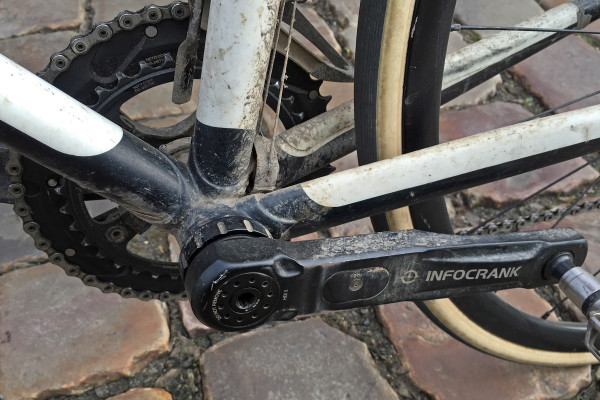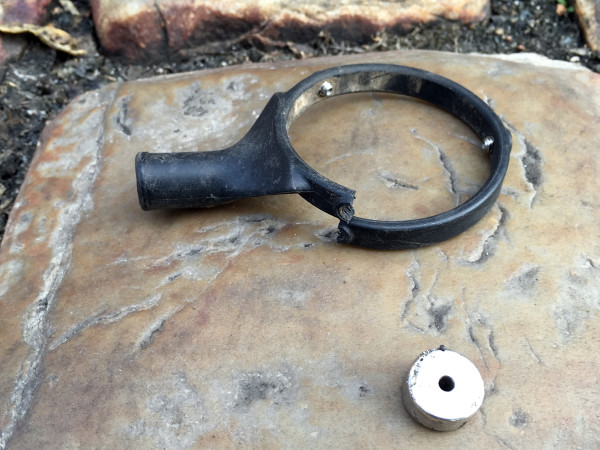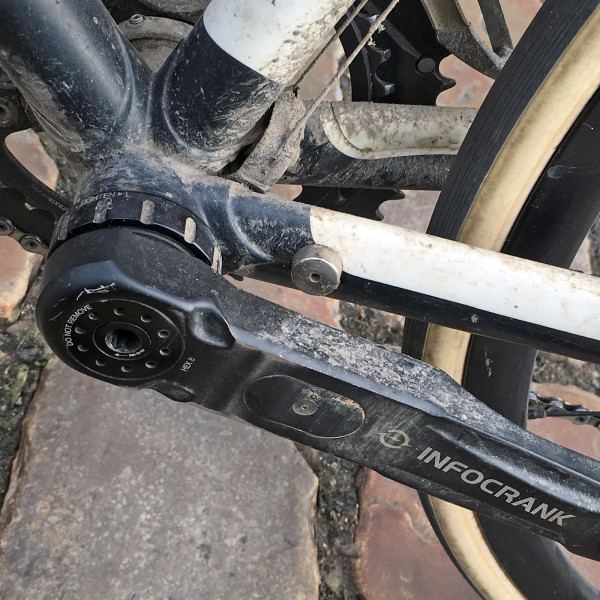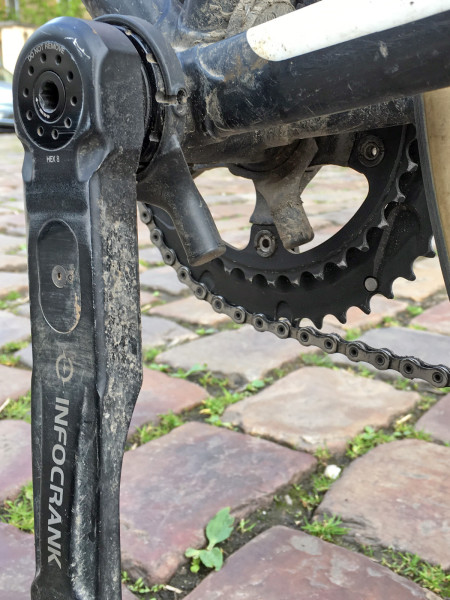We’ve been testing Verve’s Infocranks in the harshest conditions you could drum up for a power meter, from rough gravel roads to the mud and pressure washers of cyclocross. But the only real issue after several seasons of testing had been with the magnets needed to ensure accurate cadence reporting. Now up-to-date and accurate cadence measurement is a huge deal in power meters. Since the Infocrank actually measure stress in the cranks and equates torque out of that, it needs cadence (or its analogue of angular velocity) to calculate power. Now Verve after working on the issue for a couple of years, both in the lab and with their pro-team testers, have managed to get accurate cadence data with the existing sensors in the crank and without the use of magnets. Check out the details below and how to get this over the air update now…
We had talked with Verve about how they could eliminate the crank sensor magnets in the past, but the issue was complicated by all of the other vibration and noise picked up by the power meter’s sensitive on-board position sensors.
The desire to remove the magnets was two-fold, something we experienced a bit of both. Our first issue was actually installing the Infocrank Classic which used Shimano’s 24mm spindle. Since it kept the Shimano bottom bracket, you couldn’t use the magnets Verve developed to mount on the Praxis BB that they provided with the 110BCD of the power meter. Verve produces an adhesive magnet that works fine for most carbon frames, but our unique titanium test bike didn’t work with them, so we resorted to zip-tied magnets on the chainstays.
Our second issue was when we broke one of the rings that held the magnet around the external Praxis BB. Racing cyclocross and riding gravel roads, those magnets were always in a perilous location, and we were frankly surprised that it lasted so long. In the end sticking a very strong magnet to the steel chainstay kept us running up until this firmware update.
The Revolution Update (RevUp) means to eliminate these concerns and can work now with 2, 1, or no magnets installed. Now with more refinement of their proprietary Crank Position System (CPS) software, the existing strain gauges in each crank arm can be used together to accurately detect every arm rotation, no matter the pedaling intensity or style of riding. With the new firmware, the cranks CPS will automatically detect whether magnets are in place and if so it will use them, and otherwise will sense cadence based on movement. plus, Verve says that after a lot of time in sorting out the RevUp update power metering data maintains their same level of accuracy.
Only two functional changes come with the update. Overall battery life is slightly decreased as each arm is frequently checking load inputs to detect movement. Verve hasn’t specified precisely how much impact there is on the life of the batteries, but does call it slight. The other change is that the process for waking the power meter is slightly altered after replacing batteries. Now you will need to pass a magnet over the sensor bulge on one arm to wake it after installing a new battery; then you have to wait 5 minutes for the crank to sleep otherwise it will be looking for a cadence magnet to calculate power. Other than that, it seems pretty straightforward. While most existing users can just continue with exiting magnets, those with frame who had mounting issues before should be happy.
Verve Cycling’s new CPS technology (Crank Position System) is now available to all existing InfoCrank users via a free RevUp firmware download. Users just need to download the new software and update it through the cranks’ ANT+ dongle interface.
More info and Windows/Mac/Linux install instructions at vervecycling.com/firmware-updates.




